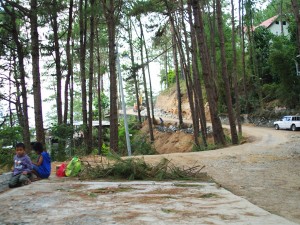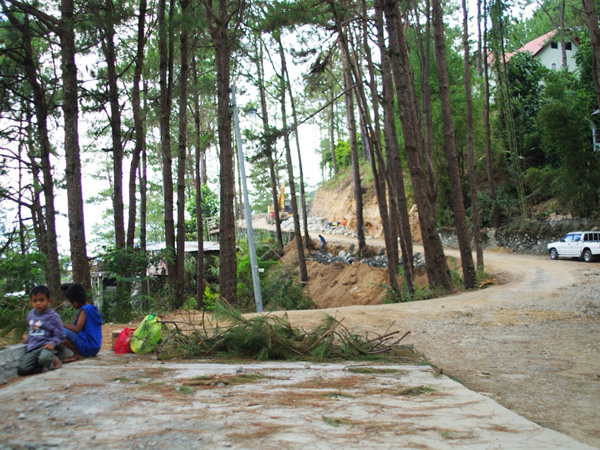
MANILA, Philippines – It has long been the rallying cry of environmentalists: “Plant trees to fight climate change.” But what exactly is the science behind the trees’ ability to cool the climate?
As the temperature in the Philippines soars to near scorching levels, trees have several direct and indirect cooling effects for people and for the environment, biologist and former Haribon Foundation researcher Kevin Carlo Artiaga explained in a phone interview with INQUIRER.net.
“There are many ways that trees can reduce the temperature on Earth and the local weather,” he said. “First, individual trees provide shade to their immediate vicinity which is very useful.”
“The second way it cools the immediate area is because of its absorption of sunlight. Plants are better at cooling because they absorb sunlight and turn it into energy through photosynthesis. The air around trees are cooler,” Artiaga said.
Unlike pavement or cement which make up the many buildings and roads in urban settings, trees do not heat up under direct sunlight making them like heat absorbers.
“The third way is trees can help cool the temperature is because, during the process of photosynthesis, they release small amounts of water vapor which cools the surrouding air,” Artiaga said.
This process, called evapotranspiration (from evaporation and transpiration), is also the same process that occurs when rubbing alcohol or cologne is put on the skin. It creates a cooling effect because heat is taken away along with the evaporation of the alcohol.
Heat index
The Philippine Atmospheric, Geophysical, and Astronomical Services Administration (Pagasa) warned the public against too much exposure to the sun as this may cause heat cramps, muscle spasms, and even heat stroke.
The temperature that a person feels in the body is measured by the heat index, this is compared to the actual temperature measured outdoors.
The heat index in Metro Manila could reach a maximum of 39.4 degrees Celsius within a period of five days from May 7, 2014. Pagasa advises “extreme caution” with the forecast heat index.
Artiaga said that the warmer air is likely caused by dust and pollution that saturates the urban landscape.
“Dust particles and other pollutants contribute to the hot weather because they absorb the sunlight while they are floating around causing warmer air,” Artiaga said.
Rainy forests
While individual trees already have several benefits, an entire forest has positive cooling effects to the weather to the point where it can cause rain.
“Rainforests can promote the weather to be rainy, they have very fast evapotranspiration rates allowing for the rain that has fallen to become water vapor again forming clouds above the forest,” Artiaga said.
“Rainforests promote rain where they are, thats the benefit of having many rainforests here in the Philippines. This effect is only viable if the trees are many and they are in a rainforest, if trees are scattered it wont have the same rate of evapotranspiration and the wind can blow away the water vapor to other places,” he said.
However, the rainforest cover in the Philippines has been declining due to continuous deforestation.
Artiaga cited data from the Forest Management Bureau (FMB) of the Department of Environment and Natural Resources (DENR) which showed that the forest cover of the Philippines is at 22.8 percent
“Based on 2010 satellite imagery, the total forest cover of the Philippines is estimated at 6.84 million hectares. Given the 30 million hectares land area of the Philippines, that is 22.8 percent forest cover,” Artiaga said.
“In comparison with the 2003 forest cover data, the total forest cover of the Philippines decreased by 328,682 hectares, or 4.59 percent, from 7,168,400 hectares in 2003,” he said.
Long term cooling
The lasting impact of trees when it comes to cooling the climate is in the basic process of photosynthesis which takes away carbon dioxide from the air and produces oxygen.
“In the long term, trees can keep the climate cool is by taking away the carbon dioxide in the air. Earth is warming because of the large amount of carbon dioxide being released in the air from petroleum products which causes air to store more heat,” Artiaga said.
“If people plant more trees, replant forests, reduce deforestation activities, then we allow those forests that are already there to absorb carbon dioxide that will cool our climate. Right now the rate for warming is beyond natural, its man-made,” he said.
Recently, super typhoon Yolanda (international name Haiyan) has been cited as a result of global warming. Yolanda was unprecedented in size and scale causing widespread destruction across several provinces in the Visayas region.
The Philippines is also bracing for the likely occurrence of the El Niño phenomenon which will cause warmer and drier temperatures resulting in droughts.
Artiaga urged the planting of endemic fast-growing tree species that can provide shade in as soon as two years. Most of these trees can be found in Haribon Foundation’s tree nurseries.
RELATED STORIES













































